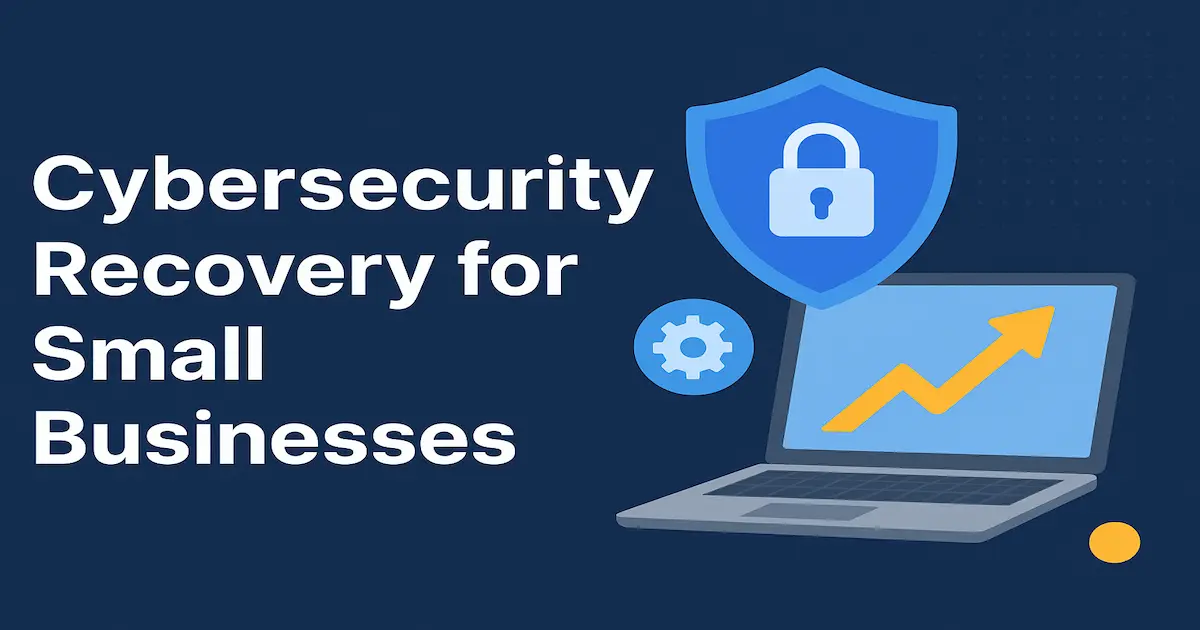Cybersecurity is no longer a luxury; it has become a necessity for all businesses. Regardless of size, every organization must put cybersecurity best practices in place to protect its data, employees, and customers.
For small businesses, the risks are even greater. With limited IT security protocols and smaller budgets, they are often the primary target for cybercriminals looking for easy wins.
According to industry reports, nearly 43% of cyber-attacks affect small businesses. This staggering number highlights the urgent need for effective incident response strategies and recovery plans.
Data breaches, phishing scams, and ransomware attacks are only increasing, and the consequences of cyber threats can be devastating—ranging from financial losses to reputational damage.
In this guide, we will explore the four key steps businesses should follow to recover after being targeted by cybercriminals, and how they can strengthen their defenses to reduce future risks. Lets dive in!
Contain the Damage
The first and most important step after detecting a cyber-attack is to contain the damage. Quick action can prevent the attack from spreading across your systems. This includes:
- Network isolation: Disconnect affected systems from the internet and internal network.
- Cloud security measures: Suspend or isolate cloud-based services if compromised.
- Device shutdown: Power off or disconnect compromised devices immediately.
During this stage, avoid deleting files or wiping systems right away. Instead, focus on evidence preservation and digital forensics, which are crucial for threat analysis and future investigations.
“Simply put, quick containment limits exposure and protects your business’ critical assets.”
Assess the Situation
Once the cyber threat has been contained, businesses must conduct a thorough investigation. Work with your cybersecurity experts or internal IT team to assess the scope of the attack. This stage involves:
- Security breach investigation to determine how the attack happened.
- Reviewing whether sensitive information has been stolen, altered, or deleted.
- Documenting all actions taken, including timelines, discovery methods, and immediate responses.
Such detailed documentation is not only important for internal analysis but may also be required for cyber insurance compliance, legal obligations, and regulatory reporting requirements.
This post-attack risk assessment helps organizations understand the vulnerabilities exploited and serves as the foundation for recovery planning.
Read More: Thejavasea.me Leaks AIO-TLP287: Understanding the Impact and Implications
Recover and Restore
After assessing the damage, the next step is to recover business operations. This involves rebuilding systems, restoring data, and regaining customer trust.
- System backup and restore: Use secure backups to rebuild your IT environment. Always scan backups to ensure they are not infected.
- Testing restored systems: Before going live, thoroughly test systems to avoid reintroducing vulnerabilities.
- Stakeholder communication after breach: Notify customers, partners, and employees promptly. Be transparent in cybersecurity communication to demonstrate accountability.
Honesty in communication, even if it impacts your reputation temporarily, is essential for rebuilding trust post-attack. Internally, employees should also receive support, especially if new systems, tools, or workloads are introduced during the recovery process.
“Being transparent after a cyber-attack shows accountability and builds long-term trust with customers, partners, and regulators.”
Strengthen Defenses
Recovery does not end once systems are restored. Businesses must fortify their defenses to prevent future breaches. A post-incident review should identify vulnerabilities that were exploited during the attack.
To strengthen defenses, organizations should adopt:
- Endpoint protection solutions such as advanced antivirus and firewalls.
- Intrusion Detection Systems (IDS) to identify suspicious activity early.
- Continuous security monitoring through managed service providers or in-house teams.
- Vulnerability management strategies to patch security gaps.
Equally important is employee cybersecurity training. Workers must understand phishing attack prevention, data handling best practices, and the incident response plan.
Also Visit: CamCaps and You: Surveillance, Streaming & the New Reality We Live In
If budgets allow, businesses should consider engaging a cybersecurity firm for audits and cyber incident management support.
Conclusion
Recovering from a cyber-attack is a challenging process, but with the right incident response strategy, businesses can minimize damage, restore operations, and rebuild trust.
By focusing on containment, assessment, recovery, and defense strengthening, small businesses can navigate the aftermath of a cyber breach more effectively.
Cybersecurity is not just about defense—it’s about resilience. Taking proactive measures like system backups, employee training, and continuous monitoring can mean the difference between survival and collapse after an attack.
FAQs
What should a business do first after a cyber-attack?
The first step is to contain the damage by disconnecting affected systems, preserving evidence, and preventing the attack from spreading.
How important are backups in cyber-attack recovery?
Backups are critical. A clean system backup and restore process allows businesses to rebuild operations without losing essential data.
What is the role of employees in cybersecurity?
Employees play a major role. Employee cybersecurity training helps prevent phishing scams and ensures they know how to respond during a breach.
Should small businesses invest in intrusion detection systems?
Yes, Intrusion Detection Systems (IDS) are essential for identifying malicious activities early and strengthening overall defenses.
How can businesses rebuild trust after a cyber-attack?
By being transparent in cybersecurity communication, notifying affected stakeholders, and showing accountability, businesses can rebuild trust post-attack.












